#Egyptian New Kingdom
Text
A satirical papyrus showing a lady mouse being served wine by a cat while another cat dresses her hair, a third cares for her baby, and a fourth fans her. The mice have hilarious huge, round ears.
Where: Egyptian Museum Cairo
When: New Kingdom
8K notes
·
View notes
Text
Karnak and Luxor Temple Complexes Egypt
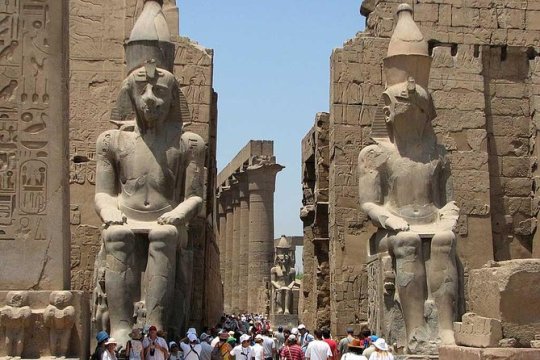
View On WordPress
#18th Dynastic Theban Triad#Abu El-Haggag Mosque#Alexander the Great#Amenhotep III of the 18th Dynasty#Amun The Creator God#Amun-Ra Suen God#Ancient Egyptian Culture#Ancient Egyptians#Ancient Greeks#Arabic word Khurnaq#Avenue of the Sphinxes#Colonnada of Amenhotep Ill and Tutankhamun#East Bank Nile River#Egypt Greco-Roman Period#Egypt Middle Kingdom#Egypt New Kingdom#Egyptian Hieroglyphs#Egyptian Ipet-isut (The Most Selected of Places)#Egyptian New Kingdom#Egyptologist#Egyptologist Professor Gaston Maspero#Emperor Diocletian#Festival of Opet#Gebel el-Silsila Area South-Western Egypt#General Ptolemy#God Amun#God Hathor#Goddess Mut#Hatshepsut Obelisks#Horemheb
0 notes
Text

Unknown, Egyptian
Amulets for the Living and the Dead
16th century BCE
From top left to bottom right: Djed-pillar; Ouadjet eye; papyrus bud; crocodile; square; Horus falcon; heart-shaped amulet; head of the God Bes
faience, obsidian, and stone
Ägyptisches Museum, Staatliche Museen zu Berlin, Berlin, Germany
342 notes
·
View notes
Text

~ Bundle of Hair Extensions.
Date: ca. 2114-1502 B.C.
Period: Old Kingdom-early New Kingdom; 16th-18th Dynasty
Medium: Human hair, linen
▪︎ From the source: These hair extensions would have been placed in a tomb for use in the afterlife. In this world, Egyptians used extensions to make their wigs or natural hair thicker and more attractive, just as people do today. The reliefs in this case show hairdressers adding extensions like these to the hair or wig of Queen Neferu.
#ancient#ancient art#history#museum#archeology#ancient egypt#ancient history#archaeology#egyptian#egyptology#egypt#bundle of hair extensions#extensions#fake hair#queen tiye#old kingdom#new kingdom#16th Dynasty#18th dynasty#human hair#ca. 2114 b.c.#ca. 1502 b.c.
2K notes
·
View notes
Text

Bust of a Pharaoh
Dating: Amenhotep IV / Akhenaten (18th Dynasty -> New Kingdom -> Egypt)
Neues Museum, Berlin, Germany
#Amenhotep#Amenhotep IV#egypt#egyptian#art#bust#world history#18th dynasty#archaeology#Akhenaten#new kingdom#limestone#background blacked out
230 notes
·
View notes
Text
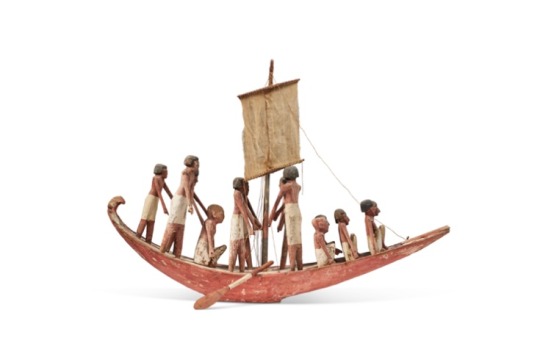

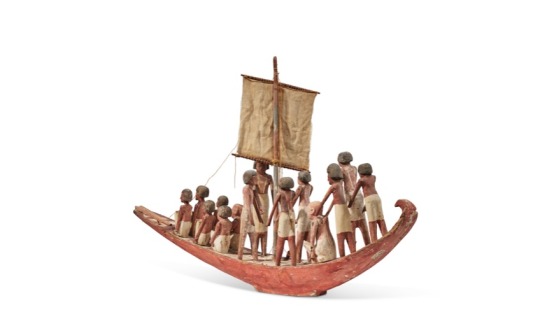
AN EGYPTIAN GESSO-PAINTED WOOD FUNERARY MODEL OF A BOAT
MIDDLE KINGDOM, 11TH-12TH DYNASTY, 2087-1759 B.C.
#AN EGYPTIAN GESSO-PAINTED WOOD FUNERARY MODEL OF A BOAT#MIDDLE KINGDOM#11TH-12TH DYNASTY#2087-1759 B.C.#ancient artifacts#archeology#archeolgst#history#history news#ancient history#ancient culture#ancient civilizations#ancient egypt#egyptian history#egyptian mythology#egyptian art
419 notes
·
View notes
Text
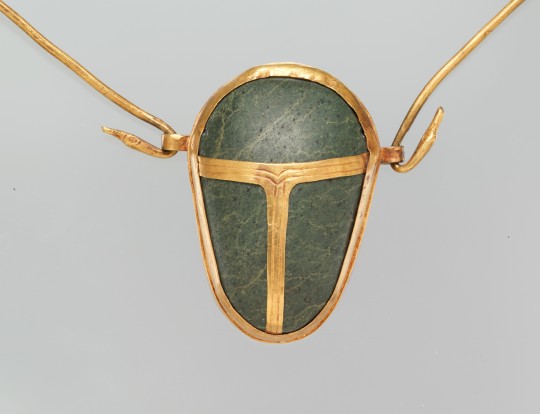
Ancient Egyptian heart amulet (gold and green schist) of one Manhata. Artist unknown; ca. 1479-1425 BCE (reign of Thutmose III, 18th Dynasty, New Kingdom). From the Tomb of the Three Foreign Wives of Thutmose III at Wadi Gabbanat el-Qurud, Thebes; now in the Metropolitan Museum of Art.
#art#art history#ancient art#Egypt#Ancient Egypt#Egyptian art#Ancient Egyptian art#Egyptian religion#Ancient Egyptian religion#kemetic#Thutmose III#18th Dynasty#New Kingdom#jewelry#jewellery#pendant#amulet#metalwork#gold#goldwork#schist#Egyptian Thebes#Metropolitan Museum of Art
694 notes
·
View notes
Text
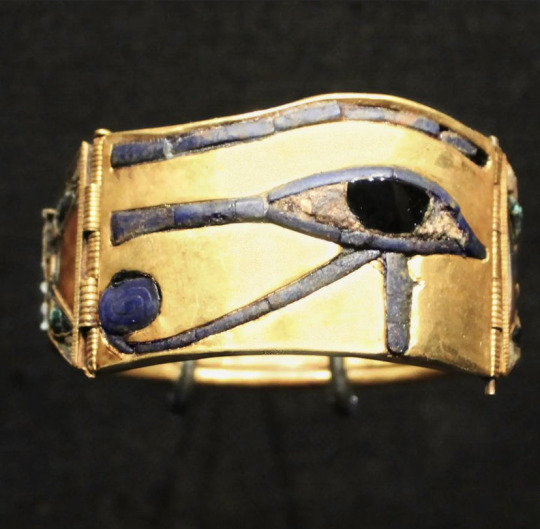
Bangle of Tutankhamen
Gold and jewels inlay Udjat Eye
18th Dynasty, New Kingdom
#art#archaeology#ancient#egyptian art#egyptology#ancient egypt#ancient jewelry#gold jewelry#jewelry#gold#jewels#tutankhamen#tutankhamun#tutankamon#new kingdom
229 notes
·
View notes
Text

The Hunter's Daughter (c. 1422–1411 BC)
via the Ancient Egyptian collection
Tomb of Menna (1422–1390 BC)
wall and panel painting
#ancient egyptian art#ancient egypt#new kingdom#new kingtom style#tomb of menna#tomb of menna seris#**a#**
189 notes
·
View notes
Text

Ankhesenamun
#ankhesenamun#new kingdom#Egypt#Egyptian#ancient Egypt#ancient Egyptian#Luxor#Waset#Thebes#luxor temple#egyptian temple#Kemet#Kemetic#Kemeticism
73 notes
·
View notes
Text
#HedgehogWeek 🦔:
All hedgehogs are capable of volvation aka conglobation - aka, they can roll up into an armored ball in defense. 🙂
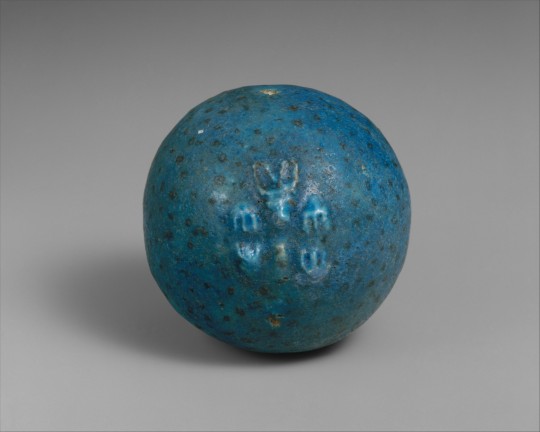
Hedghog
Egypt, New Kingdom, Dynasty 18, c. 1550–1450 BCE
Faience, diameter 5.8cm
Metropolitan Museum of Art, New York
The Metropolitan Museum of Art, New York: https://metmuseum.org/art/collection/search/544054

Photo via Stocksy United on Pinterest
#hedgehog#volvation#conclobation#mammalogy#zoology#animal defenses#ancient Egyptian art#faience#ceramics#New Kingdom Egypt#ancient art#animal holiday#Hedgehog Week#Hedgehog Awareness Week#Metropolitan Museum of Art New York#animals in art
273 notes
·
View notes
Text

A snaky detail from Yuya's Book of the Dead.
Where: Egyptian Museum Cairo
When: New Kingdom
74 notes
·
View notes
Text

Fragments of a queen's face (possibly Tiye), New Kingdom Egypt (18th dynasty, reign of Amenhotep III or Akhenaten; 1390-1336 BCE), yellow jasper
currently in the collection of the Metropolitan Museum of Art (New York City), accession no. 26.7.1396.
#archaeology#art#classical archaeology#egyptian archaeology#egyptology#egypt#new kingdom#amarna period#amenhotep iii#akhenaten
151 notes
·
View notes
Text

Deir el Bahri June 29, 2023
118 notes
·
View notes
Text
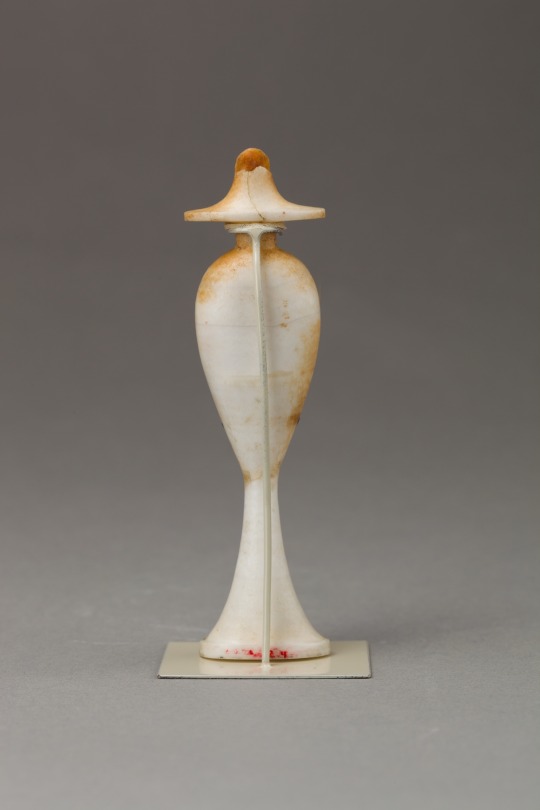


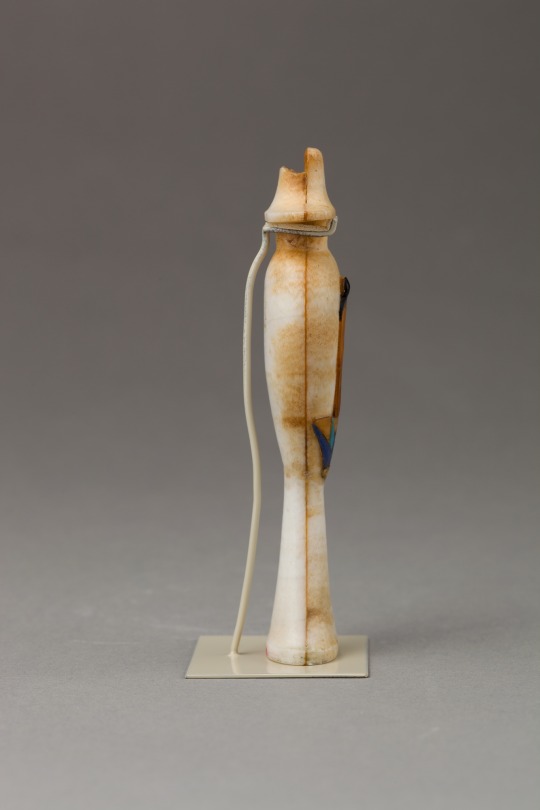
~ Perfume bottle in the shape of a hes-vase inlaid with the figure of a princess.
Period: New Kingdom, Amarna Period; 18th Dynasty; Reign of Akhenaten
Date: ca. 1353–1336 B.C.
Place of origin: Egypt; Possibly from Upper Egypt, Thebes
Medium: Travertine (Egyptian alabaster), carnelian, obsidian,gold, and colored glass inlay.
#ancient#ancient art#history#museum#archeology#ancient egypt#ancient history#archaeology#egyptology#egyptian#egypt#perfume bottle#hes-vase#princess#amarna period#18th dynasty#new kingdom#Akhenaten#thebes#ca. 1353 b.c.#ca. 1336 b.c.
778 notes
·
View notes
Text
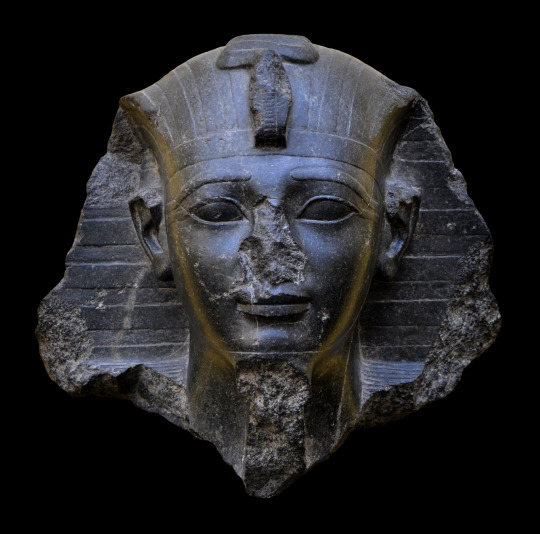
Amenhotep II
New Kingdom, 18th Dynasty, reign of Amenhotep II
Ny Carlsberg Glyptotek, Copenhagen, Denmark
Who was the Pharaoh of the Exodus? There are various theories. However, by examining the evidence found in ancient recorded history, it is surprisingly clear to establish just who the Exodus Pharaoh was. In "The Exodus Pharaoh EXPLAINED," Archeologist and Professor Joel Kramer shows us that Amenhotep II was indeed the Pharaoh of the Exodus.
#Amenhotep ii#egyptian#egypt#world history#bust#pharaoh#exodus#bible#art#history#amenhotep#joel kramer#the exodus#diorite#18th dynasty#new kingdom#ancient egypt#head of a pharaoh#background blacked out#ancient historian#roman#josephus
54 notes
·
View notes
